Ausstellungseröffnung in der Städtische Galerie Iserlohn am 10.02.2023
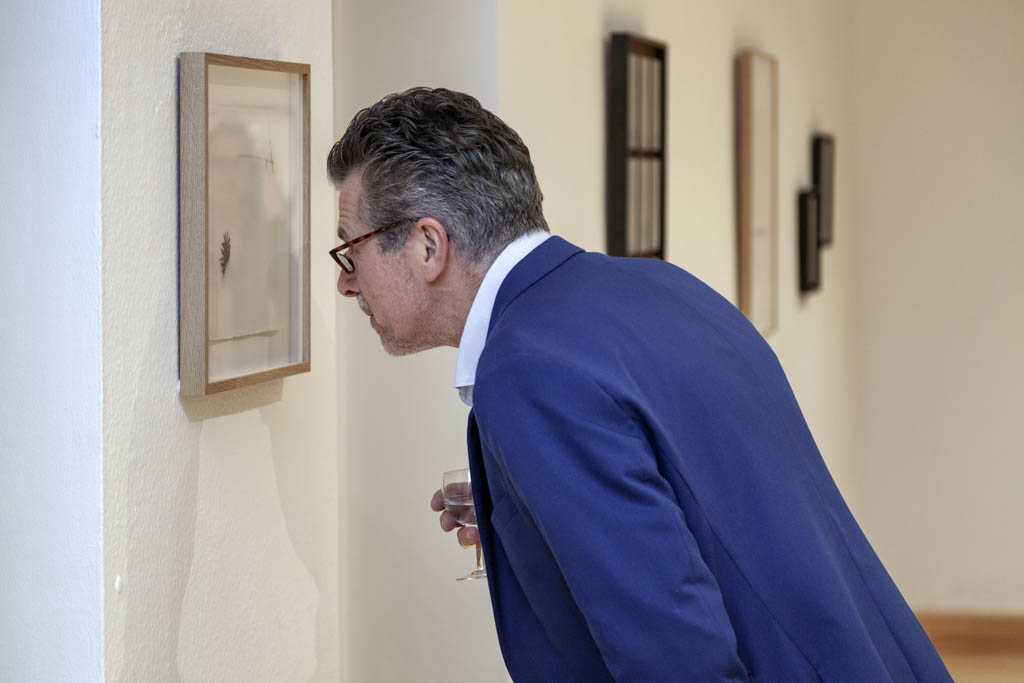
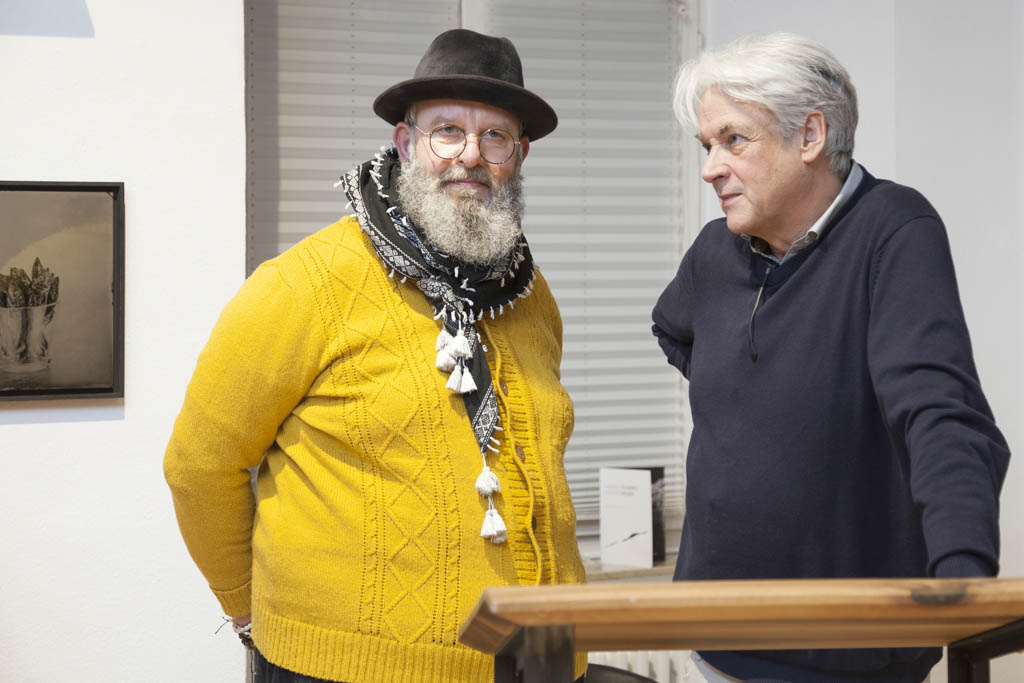
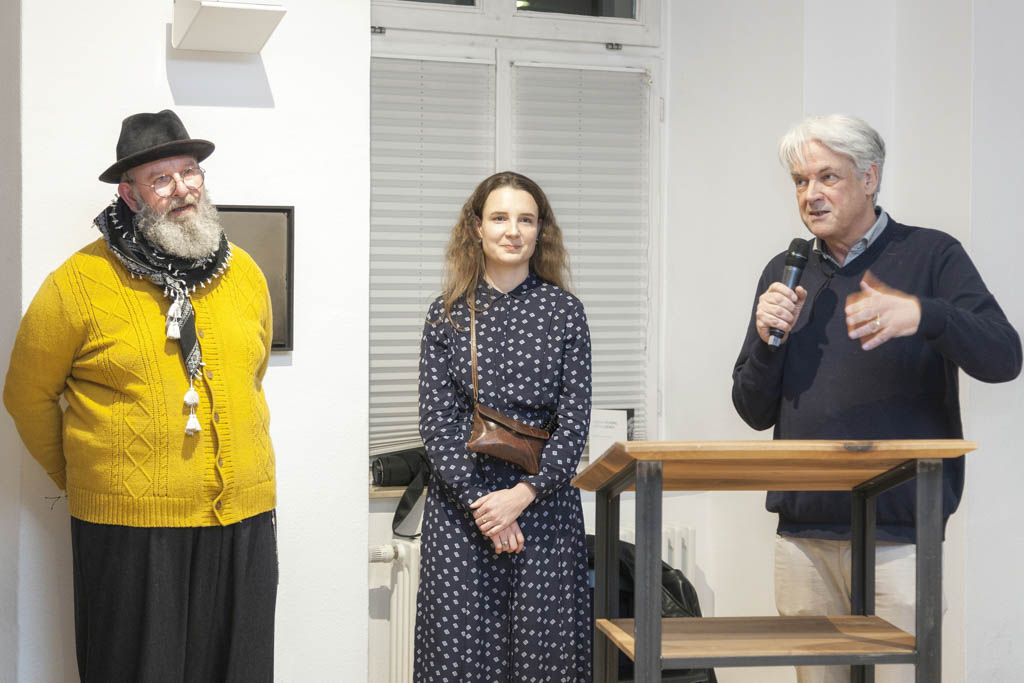
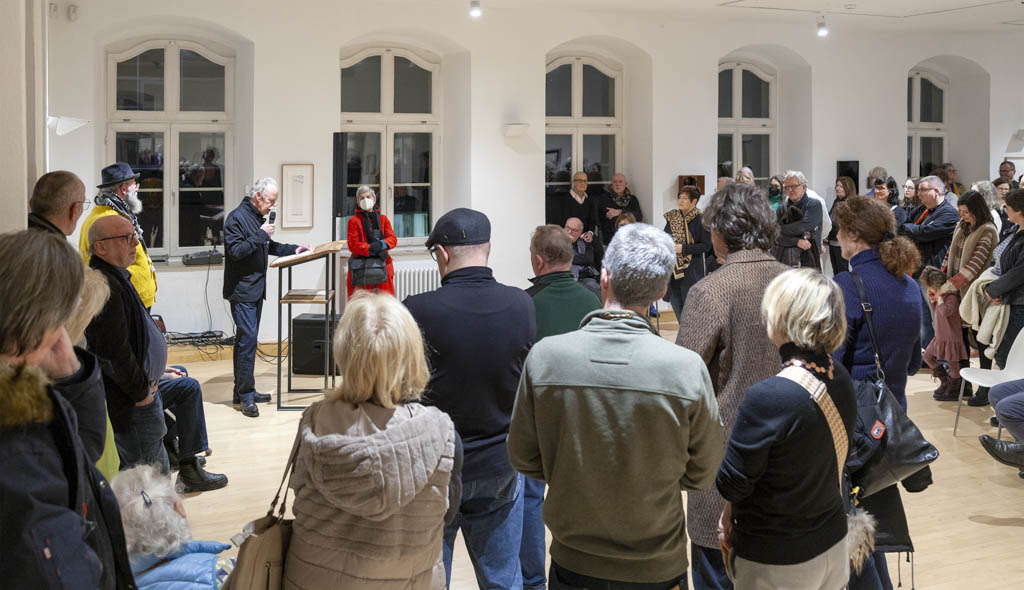
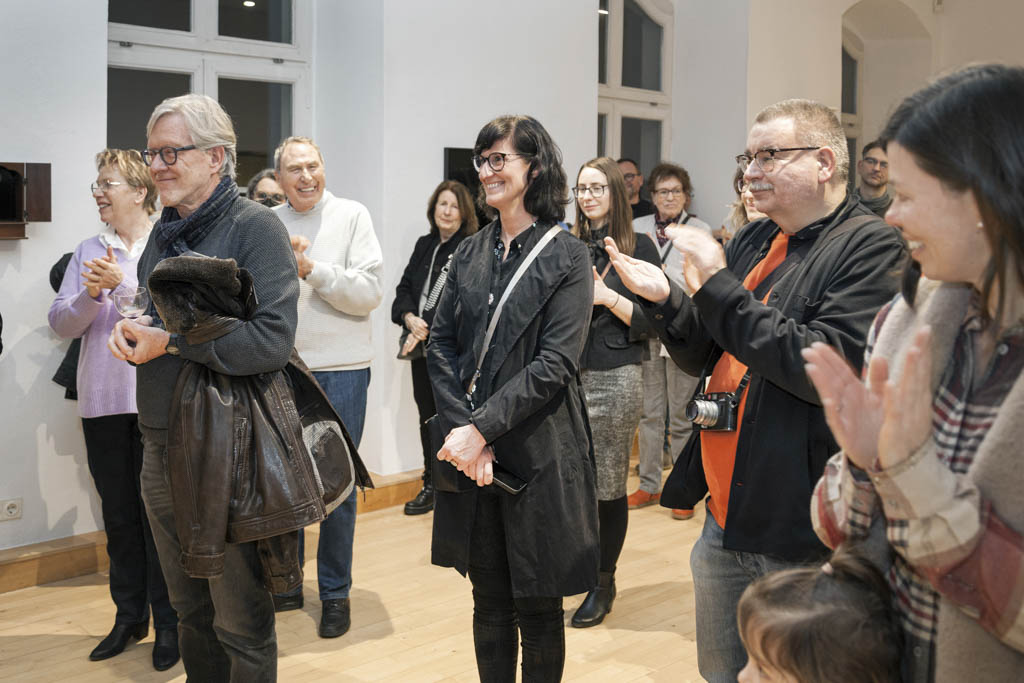
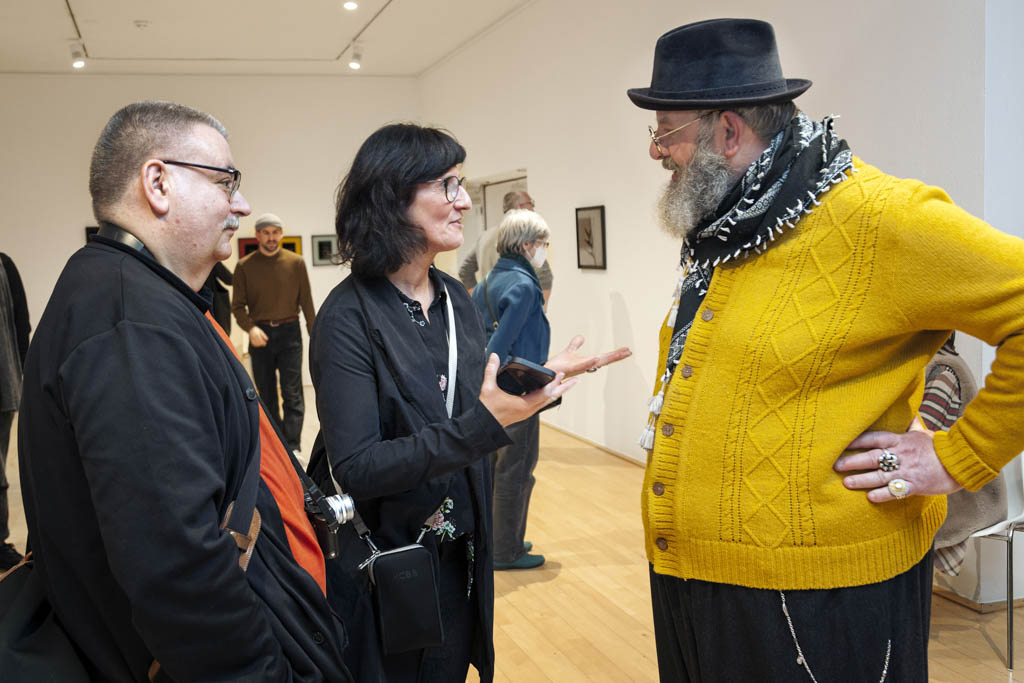
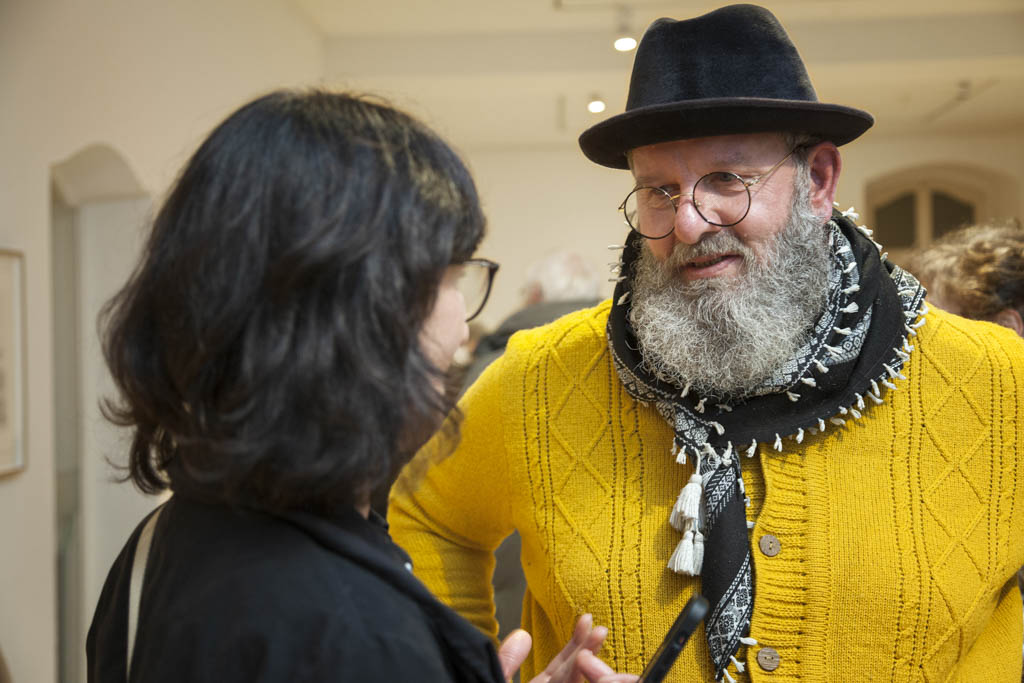
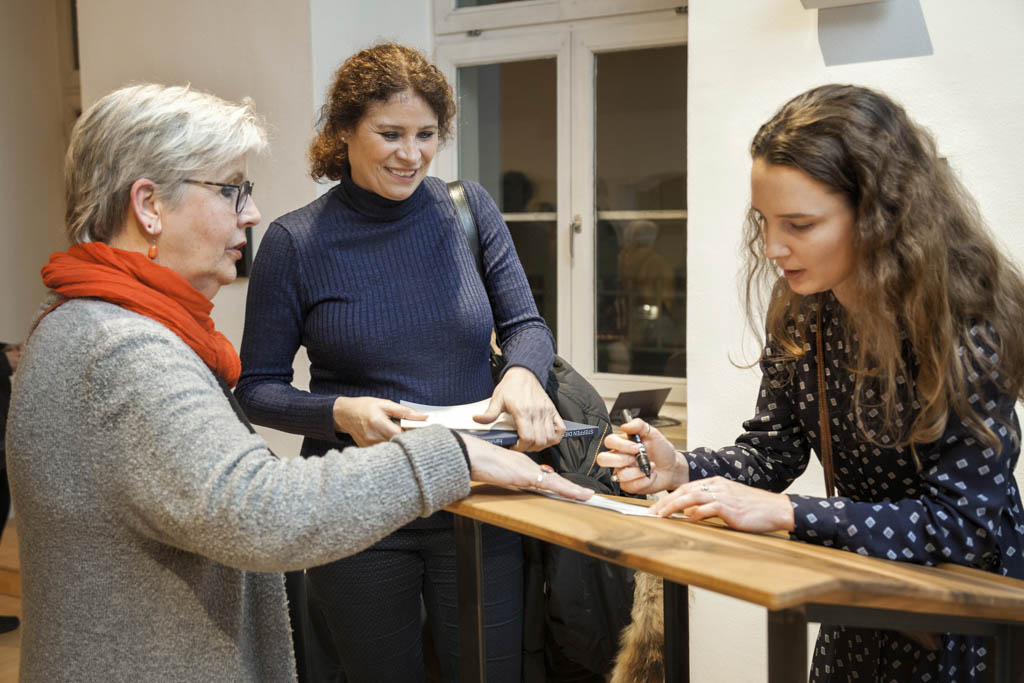
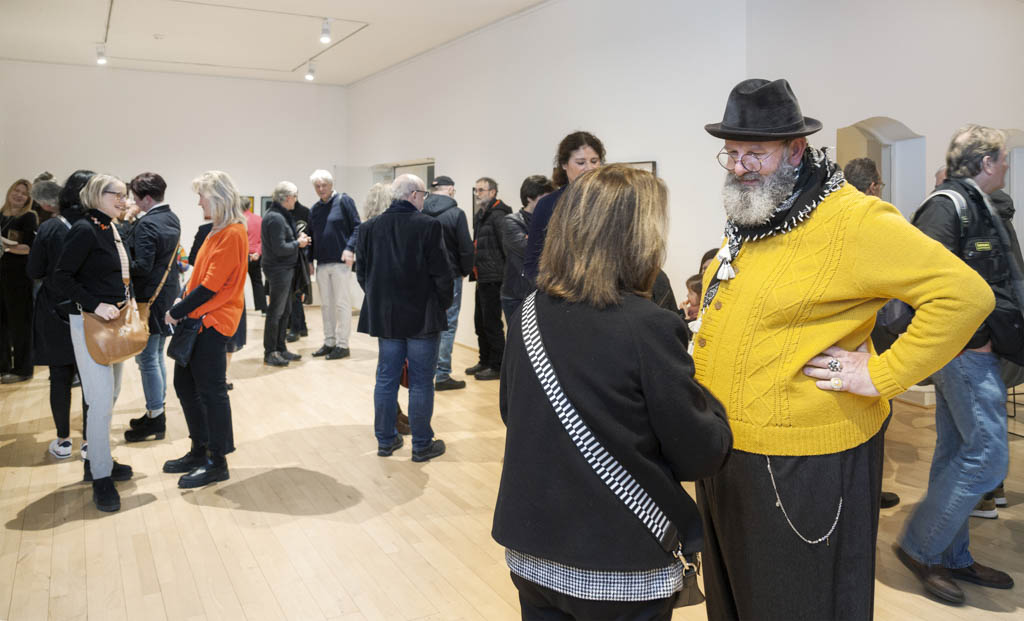
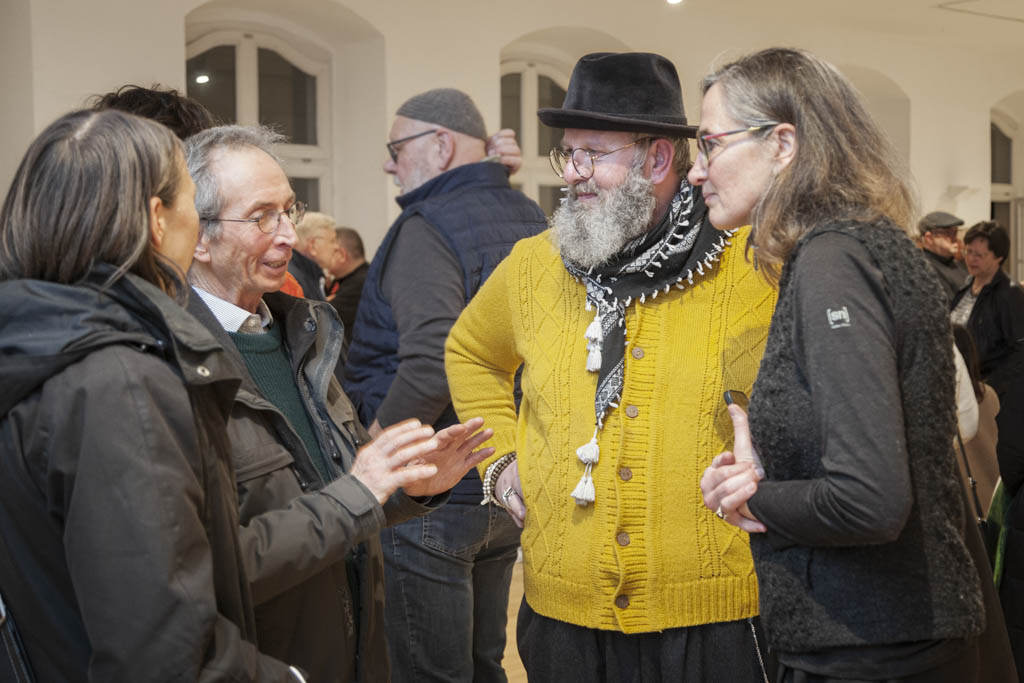
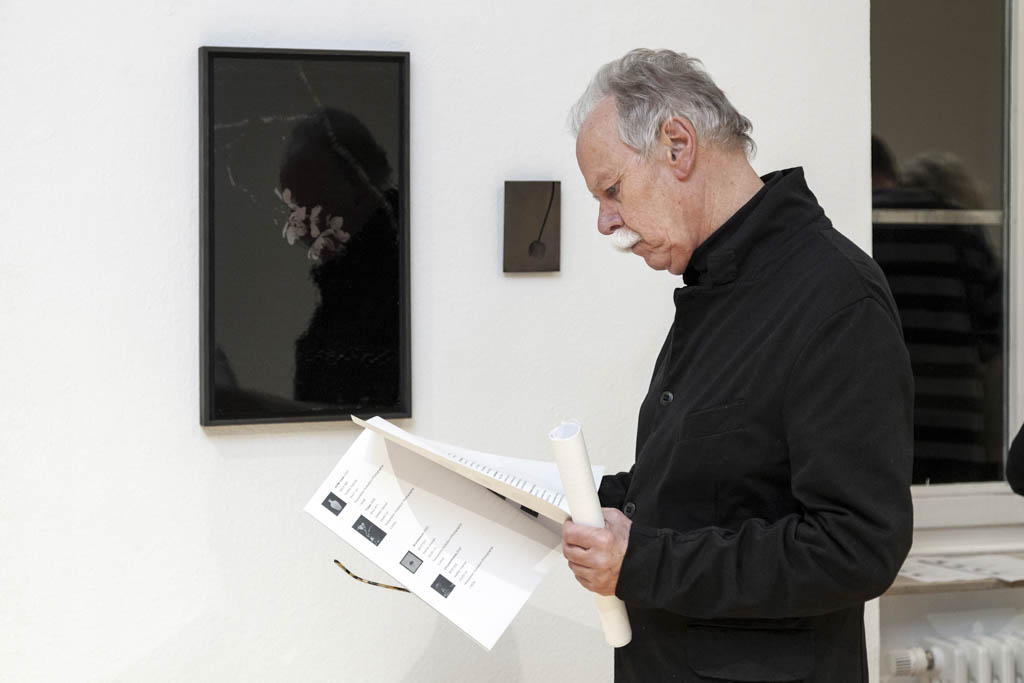
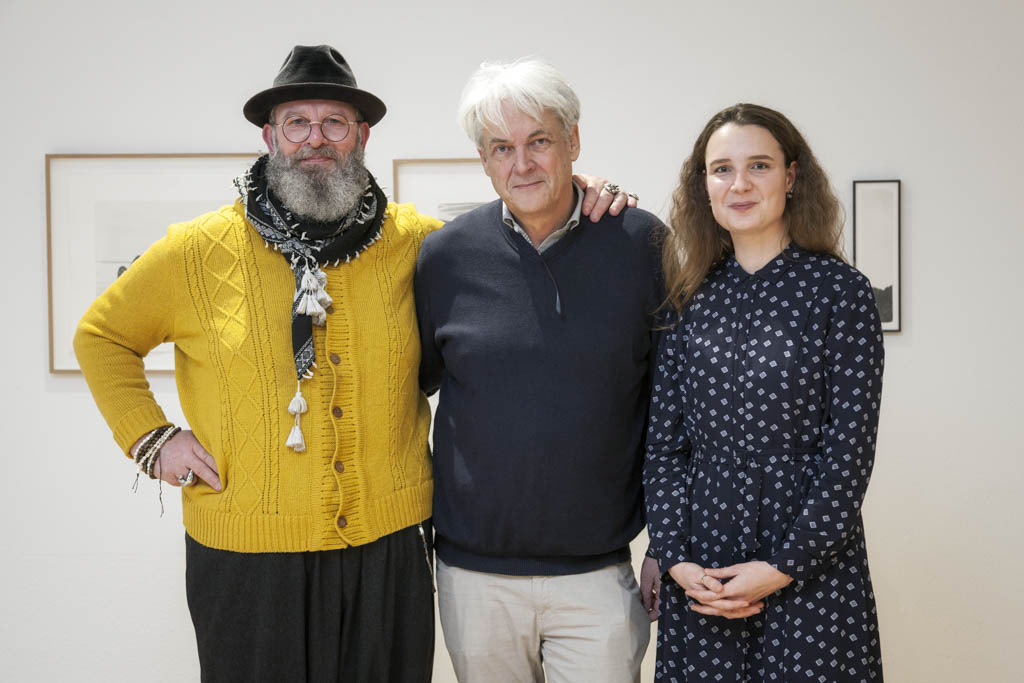
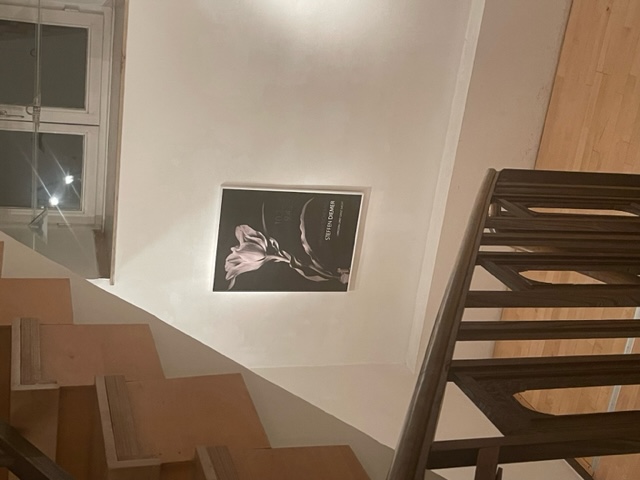
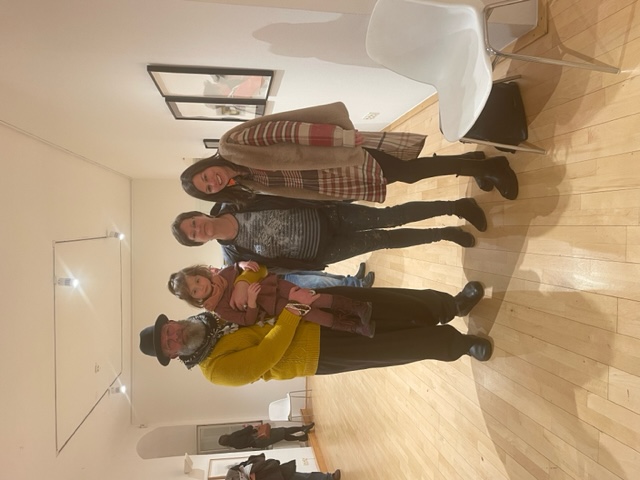
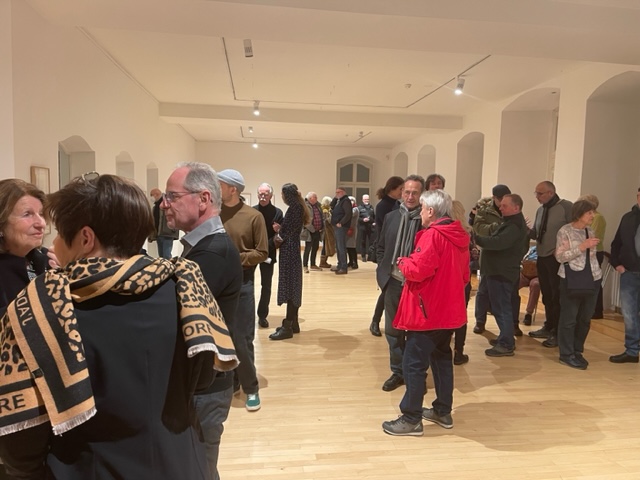
Exhibition opening in the Städtische Galerie Iserlohn on 10.02.2023 of our exhibition - Slowly and gently - together with Hannah Schemelwas a great success.
A very well attended opening with a great introduction by Hans Michael Koetzle from Munich. A big thank you to the team of the Städtische Galerie Iserlohn, especially Rainer Danne and Katja Pasche. It was and is a great cooperation.
I am now putting Michael Koetzle's opening speech online for you to read on my homepage. It is probably superfluous to mention and nevertheless I do it, that the text is subject to the copyright of Hans Michael Koetzle!
As a prelude, ladies and gentlemen,
To start with, you will accompany me to the, you heard me right, Mont Blanc, 4810 meters high, a, as they say, particularly dangerous, i.e. capricious, piece of nature. It is not by chance that Mont Blanc is called Montagne maudite, the "damned mountain".
The year was 1861, and no fewer than 26 men, among them the photographer Auguste Rosalie Bisson, were on their way to the top on this initially promising August day. Not so much to make alpine history. The summit had already been reached for the first time in 1786. But rather to write their name in the annals of photography. For the first time at this altitude and with a view of ice and snow, photographic images were to be taken. And this in a procedure that was already somewhat difficult to master at sea level and in reasonably comfortable surroundings.
We're talking about the wet colodium process with its more than a dozen steps from sensitizing the plate to exposing it in the camera to developing and fixing the negative. In this case, it was not just the camera, glass plates, cassettes and Staiv that the team had to haul to a distance of around 5,000 meters. A complete photo lab had to be set up at this altitude and put into operation at minus 12 degrees and more.
I quote a contemporary report: "The tent was pitched, the camera placed on the tripod, the plate poured over, made sensitive, exposed and the view taken. What a view! What a panorama! When the picture was elicited, no water was at hand to wash it off; snow had been expected to melt from the heat of the lamps; but in this atmosphere the lamps burned only with very small
flames. A man was placed by the lamps to keep them burning; he fell asleep. He was replaced by another who suffered the same fate. At last Mr. Bisson himself managed to get enough of this precious element. He hurried to his tent and completed his negative."
Auguste Rosalie Bisson managed just three shots during this first successful summit tour. But why, you may ask, why am I telling this? What does this story have to do with our exhibition, what does it have to do with Hannah Schemel, with Steffen Diemer? The answer is simple. With Bisson, with his excursion into the mountains, we return to those roots of the medium to which Hannah Schemel and Steffen Diemer also feel committed as photographing artists.
One could say of photography that it died twice - only to return in a changed form. Around 1880, the gelatin dry plate replaced the time-consuming, highly complicated wet plate process just mentioned. About a hundred years later, the light image in its analog form became largely obsolete. Both times, something was gained, namely speed, simplified handling, basically a democratization of picture making.
In fact, amateur or snapshot photography, but also genres such as street photography, travel photography or the current picture report only became possible thanks to the ready-made, always available dry plate. A century later, the invention of the digital camera liberated us from chemistry and the darkroom, from "ballast" that had become glass or paper, in favor of data sets that could be sent around the world free of charge at the speed of light.
At the same time, such "mundane" things as 35mm film, the negative, and the contact sheet as a reference have become superfluous. Photography has lost its "brand essence," its credibility, and its claim to convey reality. Editing and Photoshop are so much a part of the digital gene that people now fundamentally distrust photographic images.
And there is something else that has fallen by the digital wayside: that cautiousness, that deliberate action, that economy in image-making that has distinguished photography for around 150 years. 35mm film, with its 36 possibilities, still imposed a clear limit on photographers. In the meantime, there are no longer any limits. The smartphone has mutated into a body part and has replaced our own looking, the carefully probing gaze.
The digital world, the world of professional photography, does not need to be explained to Steffen Diemer. The camera artist, born in 1966 in the Palatinate, has worked as a photojournalist for more than two decades. He has traveled to more than 70 countries on four continents as a freelance photographer and explored them with his camera, including countless wars and conflicts.
Not that he sought out misery. It came at him at home in Mannheim, where he didn't look away when he came across homeless people, or out in the world, where violent dying was part of everyday life. Diemer saw himself in print. In Der Spiegel, in Stern, in the FAZ. What sounds like success, however, became an increasing burden, even leading to burnout and collapse.
In 2011, Steffen Diemer said goodbye to photojournalism and reinvented himself without giving up photography. In the deceleration of his work
Diemer found a creative perspective in the deceleration of his work, and an artistic horizon in the exploration of new technological territory, which was basically a field long since abandoned.
Quite similar is Hannah Schemel, who, as it were, prescribed herself a different path overnight. At the age of fifteen, Schemel, who was born in Bühl in the Black Forest, had already spent a year in the USA, where she took a photography course and became acquainted with 35mm and darkroom cameras. Back in Germany, she began studying communication design with a focus on photography at the Mannheim University of Applied Sciences. Graduated. Worked in an agency.
But what sounded like a career in new media or advertising quickly turned out to be a dead end. Too much hustle and bustle. Too much commercialism. Too many loud promises. Ultimately, the edgy world of advertising failed to excite the young Hannah Schemel - as little as a now dematerialized medium. She didn't even look at the masses of photos on her hard drive anymore, Schemel says.
Hannah Schemel as well as Steffen Diemer consciously took one or two steps back. Procedurally, they beamed themselves back to a literally pre-industrial time, to a time when photography was still a craft, a kind of alchemy with tangible results, after all. They turned their backs on a world of viral images in order to learn to look, to marvel, to see anew. Their recourse to historical, basically extinct or unusual, widely forgotten processes is not a whim, but a conscious attempt to approach the material world with humility, with a slowed-down gaze.
In Steffen Diemer's case, it was pure chance that introduced him to the so-called "wet collodion process. The way was pointed by a photo magazine he discovered in passing, in which the historical procedure was described. The advantages at the time: for the first time, glass acted as a layer carrier, the result was a finely drawn negative, and above all, a considerably increased light sensitivity compared to the daguerreotype or calotype that had been widely used up to then, which made portraits possible on a larger scale. Until 1880, however, the process dominated everyday life in the photographic trade.
Steffen Diemer obtained further literature, bought the necessary chemicals together and began his experiments. It took him three years and a six-figure investment before the first successes became apparent. In the end, Steffen Diemer was proficient in a technique that only a few people in the world had mastered.
The starting point for the wet collodion process is a cleaned and polished glass plate that is doused with collodion, a sticky liquid reminiscent of honey. In the darkroom, the plate prepared in this way is sensitized in a silver nitrate solution, placed in a light-proof cassette and finally exposed in the camera. Subsequently, the exposed and still wet plate is briefly developed in gallic acid, fixed in sodium, watered, dried and finally coated with a protective varnish. Above all, the exposure must be done quickly, because as the collodion dries out, the light sensitivity of the layer decreases rapidly.
As early as the 19th century, it was common practice to back the mostly small negatives, mainly portraits, with black. In this way, what was in principle a reproducible plate became a positive one-of-a-kind - often decoratively framed as an "ambrotype" the size of a hand. Steffen Diemer achieves a similar effect by using black glass as a support. He obtains the material from a company in the Upper Palatinate that specializes in special glass and can supply glass up to 65 cm wide. His cameras are correspondingly dimensioned, including a wooden "monster" made in Bulgaria with a bellows that can be extended to two and a half meters.
All kinds of trouvailles thus find their way into a pictorial cosmos that seems to have learned from the still lifes of the Baroque. Indeed, the monochrome arrangements of Dutch artists such as Pieter Claesz have inspired photographer Steffen Diemer, even if he contrasts the sometimes richly laid table of the painters from the period after 1600 with a decided reduction, sometimes emptiness, in any case modesty.
Diemer's gaze is more concentrated, focused on the object as, in a sense, an individual, which can be a tulip, a pear, an egg, a chocolate kiss, garlic, or a pineapple. Nor is it about craft excellence in the sense of mimesis. With the invention of photography, this has become a matter of course anyway. It is about perception, a visual pause, a study, in other words, what Roland Barthes once called "study". Steffen Diemer avoids the "punctum," the event, the moment in the sense of setting a course.
Already during her training in Mannheim, Hannah Schemel had gotten to know Steffen Diemer and with him the charm of the wet process. Since 2016, the two have been working together, which in essence means exchange and image criticism, mutual stimulation and a strengthening of each other in the artistic path.
For technically as well as thematically, formally-aesthetically as well as in the elaboration of their pictorial results, each goes his own way.
Diemer works basically in the studio, Schemel without exception outdoors. She deals with the subject of landscape in the broadest sense. In Steffen Diemer's work, the eye also falls on selected artifacts. He has devoted himself to an early process on glass, she discovered platinum-palladium printing for himself - a technique common since the mid-1870s, which from the beginning inspired by its richness of tone, a delicate surface, a delicate melting even in the depths, as well as an impression reminiscent of works of printmaking.
Once again, the process is reminiscent of a crash course in anoganic chemistry. Platinum and palladium salts are used as well as oxalic acid, ferrio or potassium oxalate. The precious platinum-palladium solution is applied to paper as thick as cardboard with a wide goat's hair brush. Exposure takes place in a box, under UV light and using the contact process, which means that an appropriately sized intermediate negative is needed. Schemel works in formats up to 50 by 60 cm on handmade paper produced especially for her. The ingredients: Cotton, hemp and flax.
It sounds complicated in sum, which it is. Expensive, which it is. Elaborate, which it is. But for Diemer, as for Schemel, the rocky road is part of a concept, part of an artistic strategy. What is it all about? About deceleration. An intensification of the gaze that already begins in the craft. Looking deep instead of Instagram.
If something has impressed and guided Hannah Schemel, but also Steffen Diemer, in their actions, in their search for a particular timbre in photography guided, then this was and is the Japanese culture. Even in the rigor and discipline with which Schemel concentrates on exactly two cycles, she distances herself from the colorful hodgepodge of postmodern photographic art. "Kigen" (origin) is the title she has given to one series, reminiscent of her origins in the Black Forest. "Umi" (sea) is what she calls the other. Again and again she visits her southern German homeland or travels to Quiberon in Brittany. There is no need for further destinations. Depth, says Schemel, is only achieved when thoughts and actions revolve around the same theme.
Hannah Schemel walks and looks, sees and feels, frames in her mind before the camera comes into play. Her images are created in her head. Sometimes it takes hours or days until vision and reality coincide. In the process, Schemel avoids anything spectacular and is much more interested in the small, usually overlooked things. Her pictorial inventions are far removed from the heroic landscapes of Ansel Adams, for example. A branch jutting into the picture, a gentle wave, a piece of horizon must suffice.
Schemel's pictures are delicate finger pointers. Everything eventful, showy is missing. It is an aesthetics of quiet tones, the complexity and depth of which only becomes apparent when one looks closely. Thus Hannah Schemel's delicate platinum-palladium prints are emphatically simple and intricate at the same time, light and heavy, sparing and sublime, of great economy, at the same time rich in possible connotations.
Steffen Diemer's largest, custom-made camera has the dimensions of a refrigerator. Hannah Schemel drags a Sinar large-format camera for 9 by 12 sheet film and a tripod through the grounds. It makes you wonder: Why do this to yourself? Why, in the age of digital cameras that have largely taken the photographer's thinking out of the equation, does anyone resort to a downright. archaic principle? But perhaps the answer already lies in the question. Those who deal with historical processes like Hannah Schemel or Steffen Diemer want control. They want to feel the technological headwind in order to experience the adventure of photography as such again. Wants to be and remain alchemist and aesthete, director and mastermind - real author of his images.
It is indeed a cautious, well-calculated work that Diemer and Schemel have prescribed for themselves. One that leaves behind the idea of chance in photography, cultivated at the latest since the Surrealists, and instead relies on control, on meticulous procedure - step by step. Could it be that the energy that Steffen Diemer as well as Hannah Schemel invest in their pictures radiates back in the sense of a magic that is difficult to describe?
Where Steffen Diemer is dedicated to concrete, recognizable objects, Hannah Schemel seeks atmosphere. Where Diemer places his objects in front of a neutral background on center, Hannah Schemel allows herself bold approaches. If Diemer relies on ponderation, Schemel relies on asymmetry. And while the photographer cultivates the pore-deep precision of the wet plate process, she loves allusion, the approximate. By destroying the negative after the first successful print, Schemel also creates uniques: photography as something that can be touched, felt, palpated. "Photographs have always had a specific weight," says Günter Karl Bose. At least in the analog age, the print still had a grammage, a haptic, a surface, an edge: the latter is definitely considered in Diemer's work as well as Schemel's and is part of an overarching aesthetic.
In digital times, the image mutates into a dematerialized data set. Steffen Diemer's object-like creations, on the other hand, weigh heavily. And Hannah Schemel's precious handmade paper also has a tactile side. What both cultivate is a new valence. In seeing as well as in thinking, which is reflected in the recourse to special materials, in the reverence for complex processes that can be controlled at the same time. One might think that Steffen Diemer and Hannah Schemel create images from another world. We are allowed to be amazed. And learn to decipher them.
Thank you for your attention.